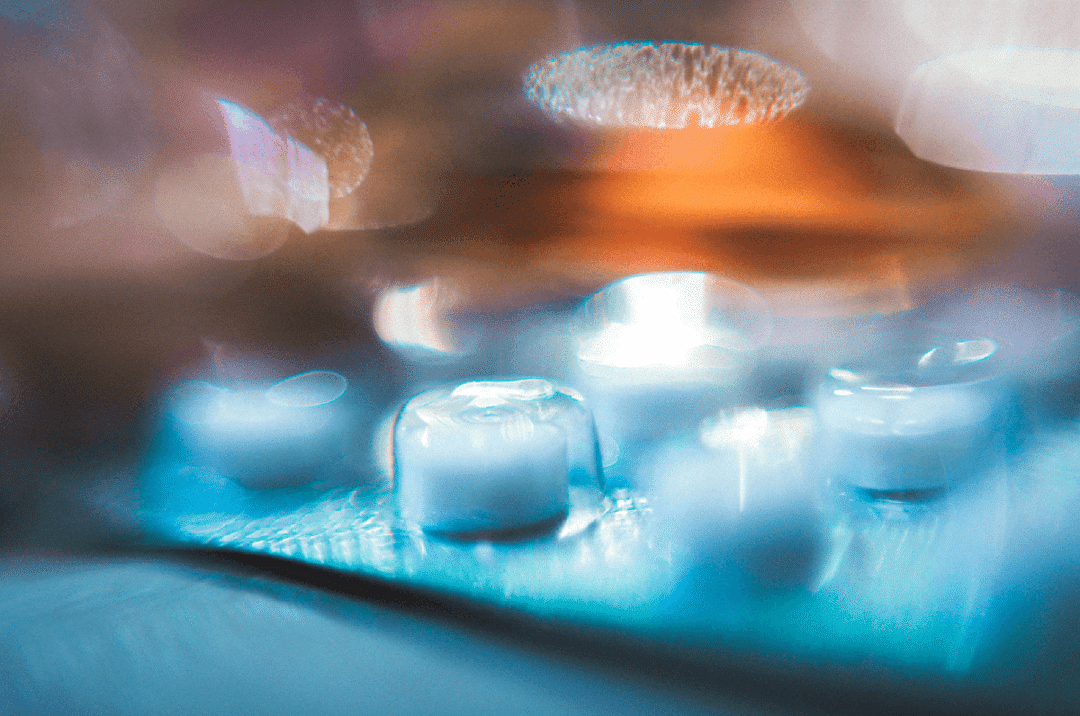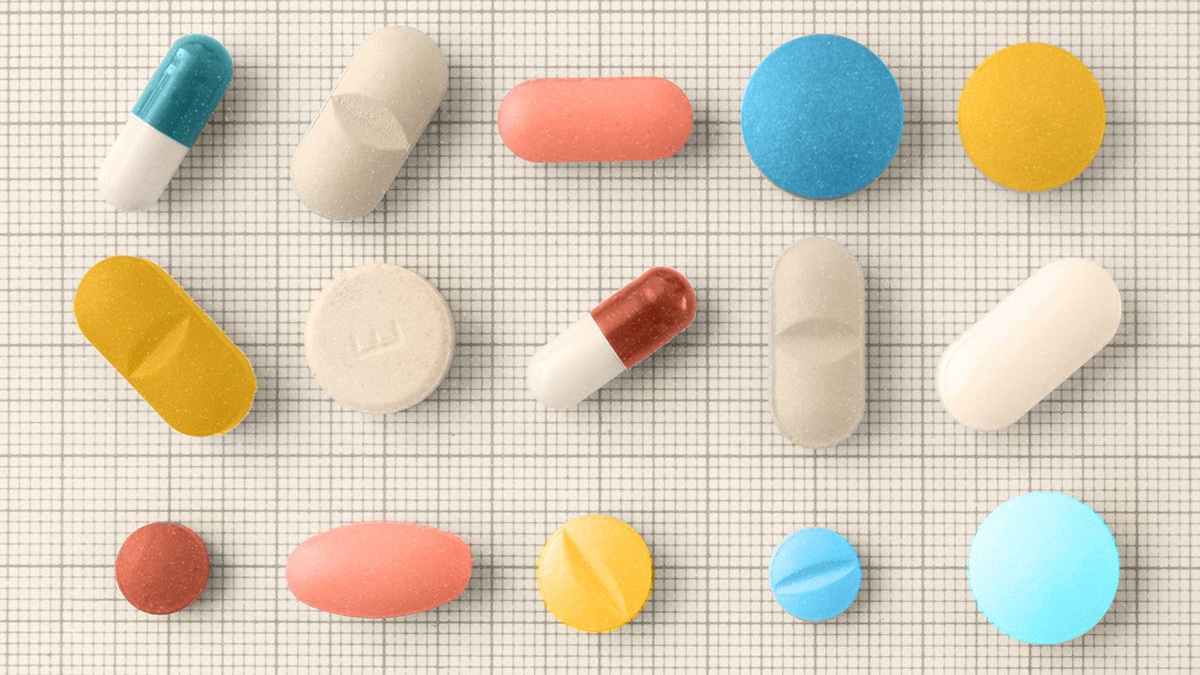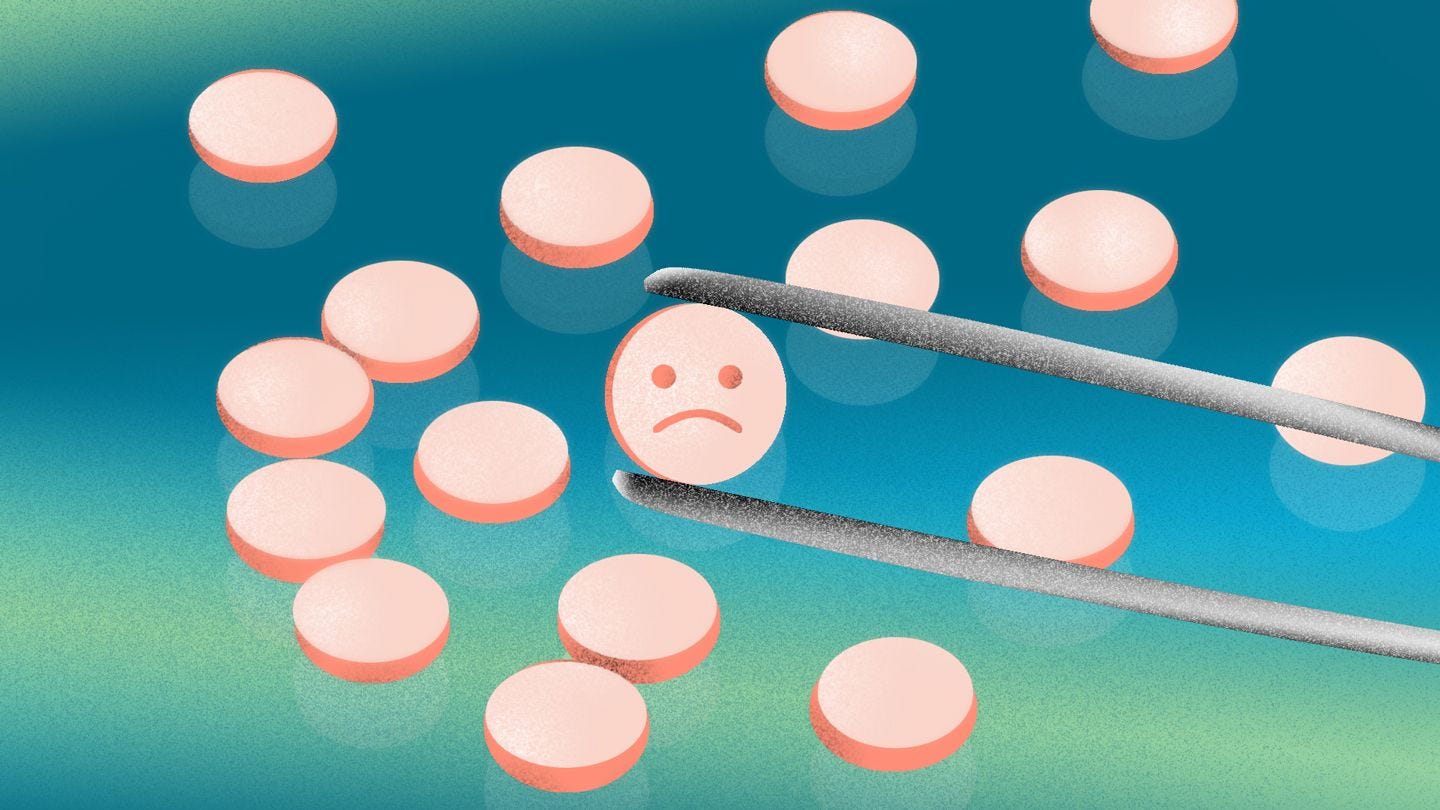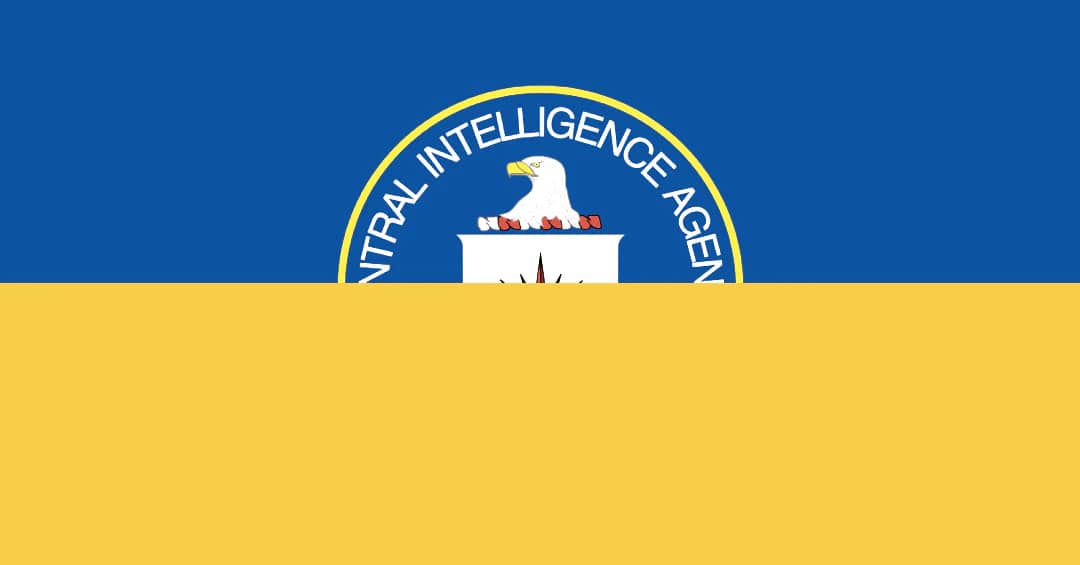

Photo by Nastya Dulhiier
Scientific Misconduct and Fraud: The Final Nail in Psychiatry’s Antidepressant Coffin
| Jan 16, 2024
“. . . if the major media picks up on this story, they will have the chance to report on what arguably is the worst—and most harmful—scandal in American medical history”
—Robert Whitaker, publisher of madinamerica.com, January 3, 2024
Historically, there have always been some patients who report that any treatment for depression—including bloodletting—has worked for them, but science demands that for a treatment to be deemed truly effective, it must work better than a placebo or the passage of time without any treatment. This is especially important for antidepressant drugs—including Prozac, Zoloft, and other selective serotonin reuptake inhibitors (SSRIs), as well as Effexor, Cymbalta, and other serotonin and norepinephrine reuptake inhibitors (SNRIs)—because all of these drugs have uncontroversial troubling side effects.
Researchers have long known that any single antidepressant drug is little more effective than a placebo in the majority of trials, shown to be less effective than a placebo in some studies, and generally found to be “clinically negligible” with respect to depression remission, while often resulting in severe adverse effects; for example, resulting in a higher percentage of sexual dysfunction than depression remission. However, for nearly twenty years, psychiatry and Big Pharma have told us that while one antidepressant may not work for the majority of patients, in the “real world,” doctors provide patients who have been failed by their initial antidepressant with another antidepressant, and if that fails, still another; and that this real-world treatment is successful for nearly 70% of patients. This narrative has been repeatedly reported by the mainstream media, including the New York Times in 2022.
The problem with this “nearly 70%” story is that the research that has been used to justify it, a 2006 report on the results of the Sequenced Treatment Alternatives to Relieve Depression (STAR*D), has long been disputed by researchers. Moreover, a recent reanalysis of previously undisclosed data reveals that STAR*D, owing to scientific misconduct that dramatically inflated remission rates, may go down in US medical history as one of its most harmful scandals. Among the few journalists in the world who have recognized the implications of STAR*D for the treatment of millions of people is Robert Whitaker, and in his September 2023 report, “The STAR*D Scandal: Scientific Misconduct on a Grand Scale,” he stated: “The protocol violations and publication of a fabricated ‘principal outcome’—the 67% cumulative remission rate—are evidence of scientific misconduct that rises to the level of fraud.”
Earlier Antidepressant Coffin Nails
Prozac, the first SSRI antidepressant, received FDA approval in 1987 and entered the market in 1988; with Zoloft entering the market in 1991, followed by Paxil in 1992. By the late 1990s, Americans were seeing drug commercials on television, which would eventually include antidepressant commercials such as the early 2000s “sad blob” Zoloft commercial that promoted the belief that SSRIs could correct the chemical imbalance that was causing depression. However, by the 1990s, researchers had already discarded the serotonin imbalance theory of depression, with the invalidity of this theory finally reported by the mainstream media in 2022.
Psychiatry and Big Pharma have never disputed the adverse effects of its antidepressants, but have claimed that the great benefits of these drugs outweigh their adverse effects. Is this claim valid?
Receiving little attention by the mainstream media in 2002, the Journal of the American Medical Association (JAMA) published a study aimed at discrediting the herb St. John’s wort as an antidepressant. However, in this randomized controlled trial (RCT), in addition to one group receiving a placebo and a second group receiving St. John’s wort, there was a third group that received the standard dose of the SSRI Zoloft. The results? The placebo worked better than both St. John’s wort and Zoloft. Specifically, a positive “full response” occurred in 32 percent of the placebo-treated patients, 25 percent of the Zoloft-treated patients, and 24 percent of the St. John’s wort-treated patients.
A major reason why most of the general public never heard about this study was that it was published with the title, “Effect of Hypericum Perforatum (St John’s wort) in Major Depressive Disorder: A Randomized Controlled Trial.” Why was there no mention of Zoloft in the study title? Zoloft is manufactured by Pfizer, and the financial disclosure of this study’s lead author, psychiatrist Jonathan R. T. Davidson, states: “Dr. Davidson holds stock in Pfizer [manufacturer of Zoloft] . . . and has received speaker fees from Pfizer.”
While this 2002 study showing that the placebo worked better than both Zoloft and St John’s wort was buried, later in 2002, a large study did receive significant attention. A leading researcher of the placebo effect, Irving Kirsch, examined forty-seven drug company studies on various antidepressants. These studies included published and unpublished trials, but all had been submitted to the Food and Drug Administration (FDA), so Kirsch used the Freedom of Information Act to gain access to all data. He reported that “all antidepressants, including the well-known SSRIs . . . had no clinically significant benefit over a placebo.”
The adverse effects of antidepressant drugs have long been known and acknowledged by psychiatry and Big Pharma. Even that “sad blob” Zoloft commercial mentions the side effects of “dry mouth, insomnia, sexual side effects, diarrhea, nausea, and sleepiness” (omitted are several other adverse effects that affect a high percentage of patients, including debilitating withdrawal reactions that can be severe and persistent). Let’s take a closer look at one of those adverse effects that is mentioned in the commercial: “sexual side effects.”
“Sexual dysfunction is a common side effect of antidepressants,” reported the journal Drug, Healthcare and Patient Safety in a 2010 examination of several studies in the review: “Antidepressant-Associated Sexual Dysfunction: Impact, Effects, and Treatment.” Sexual dysfunction problems range from decreased sexual desire, to the inability to achieve an erection, to several other sexual difficulties. This review reported that the percentage of sexual dysfunction for SSRI antidepressants over several studies runs from 25%–73%; and in one study of 344 patients who had a history of normal sexual function before SSRI treatments, there was an overall incidence of 58% sexual dysfunction, with the percentage of sexual dysfunction for Paxil users at 65%, for Luvox users at 59%, for Zoloft users at 56%, and for Prozac users at 54%. Furthermore, the long-buried iatrogenic illness (physician-caused) of post-SSRI sexual dysfunction (PSSD), in which sexual dysfunction exists even after discontinuation of the SSRI, was first reported to regulators in 1991, but it took until 2006 for it to be formally characterized as a syndrome.
Psychiatry today acknowledges antidepressant adverse effects and even acknowledges that antidepressants are often ineffective, however, it clings to the idea that if depressed patients are treated with enough different antidepressants, nearly 70% of them will achieve remission. They justify this by quoting the 2006 STAR*D study results, and the mainstream media has not challenged this.
The Final Coffin Nail: STAR*D Scientific Misconduct and Fraud
The goal of the STAR*D study, reported in 2006, was to assess antidepressant effectiveness in the “real world”—where depressed patients who don’t remit with one antidepressant are prescribed another.
In the STAR*D study, there were 4041 subjects and four treatment stages, each lasting three months. In the first stage, all depressed patients received the SSRI Celexa, and these Celexa-treated patients who failed to have remission of depression symptoms were then, in a second three-month stage, assigned to several other treatment modes, including the substitution of Celexa with other antidepressants. Depressed patients who continued to be non-remitters after these first two stages were encouraged to enter a third stage that included other types of antidepressants; and for those who continued to be non-remitters, there was a fourth stage of other antidepressants. STAR*D investigators reported, “The overall cumulative remission rate was 67%,” which the New York Times in 2022 reported this way: “nearly 70 percent of people had become symptom-free by the fourth antidepressant.”
However, this “nearly 70%” is based on scientific misconduct. Psychologist Ed Pigott and his co-researchers published a deconstruction of the STAR*D trial in 2010, and then with access to more of the study’s data, published a reanalysis of STAR*D in the journal BMJ in 2023, concluding: “In contrast to the STAR*D-reported 67% cumulative remission rate after up to four antidepressant treatment trials, the rate was 35.0% when using the protocol-stipulated HRSD [Hamilton Rating Scale for Depression] and inclusion in data analysis criteria.”
Whitaker points out, “The essential element in scientific misconduct is this: it does not result from honest mistakes, but rather is born from an intent to deceive.” For him, the most glaring scientific misconduct that rises to the level of fraudis STAR*D authors’ inclusion of ineligible 931 patients who were initially excluded by STAR*D investigators as not meeting the criteria for depression. Specifically, after the first treatment step, a report by the STAR*D investigatorsnoted that among the 4041 subjects, only 3110 met the depression criteria, and so 931 patients should be excluded from the calculation of a remission rate. However, Whitaker reports, “the STAR*D investigators snuck this group back into their count of ‘evaluable’ patients.”
Thus, STAR*D investigators moved a group of subjects that they themselves had previously excluded as being non-evaluable into the evaluable patients category, knowing full well that this would dramatically inflate the remission rate. “That tells of a conscious act of scientific fraud,” reports Whitaker.
This was not STAR*D investigators’ only scientific misconduct. They also switched the primary outcome measures during the study to inflate remission rates. Additionally, STAR*D investigators had originally designated subjects who dropped out of the study to be counted as treatment failures, however, they reversed this protocol so that these dropouts were excluded from the tally, again inflating remission rates. Even with the research misconduct of violating their original protocol, STAR*D remission rates were so unimpressive that STAR*D investigators orchestrated another maneuver to further inflate remission rates: they created a “theoretical” remission rate based on the notion that if the drop-outs had stayed in the trial through all four stages of treatment, they would have remitted at the same rate as those who did stay in the trial to that end. STAR*D investigators’ assumptions about drop-outs, Pigott points out, “are not true” as they are counter to previous research.
In summary, STAR*D investigators’ protocol violations and a baseless theoretical calculation raised the cumulative remission rate to 67%—in contrast to the 35% remission rate that Pigott calculated had STAR*D researchers stuck to the original study design.
So, what could have been the motivation for the STAR*D investigators to inflate these remission rates? The two lead STAR*D investigators were psychiatrists A. John Rush and Madhukar H. Trivedi, and in the 2006 STAR*D report, at its end in small print, are the details of their financial relationships with multiple pharmaceutical companies, including the manufacturers of several of the antidepressants used in STAR*D, such as Forest Pharmaceuticals (Celexa), Wyeth-Ayerst Laboratories (Effexor), GlaxoSmithKline (Wellbutrin), and Pfizer (Zoloft). Also detailed are the financial relationships of several other STAR*D investigators with drug companies.
Ironically, given what we know about the remission rate of non-medicated depressed patients, even the fabricated 67% depression remission rate should never have been celebrated by psychiatry and the mainstream media. While STAR*D received a great deal of publicity in 2006, another study reported that same year received almost no attention. This study, “The Naturalistic Course of Major Depression in the Absence of Somatic Therapy,” examined depressed patients who had recovered from an initial episode of depression, then relapsed but did not take any medication following their relapse. The recovery rate of these non-medicated depressed patients was tracked, and after one year, 85% of them recovered. The study authors concluded: “If as many as 85% of depressed individuals who go without somatic treatments spontaneously recover within 1 year, it would be extremely difficult for any intervention to demonstrate a superior result to this.”
Epilogue
Thanks in large part to research psychologist Ed Pigott and journalist Robert Whitaker, one establishment psychiatry publication has finally dealt with the reality that trusting STAR*D findings may have been a “huge setback” for psychiatry.
The Psychiatric Times has a history of being the most willing, among establishment psychiatry publication, to report painful news to its psychiatrist readers—albeit, long after such truths have been exposed by non-establishment researchers and independent journalists. For example, while researchers had discarded the serotonin chemical imbalance theory of depression by the 1990s, the first unequivocal declaration by an establishment psychiatry publication of the jettisoning of this theory was in the Psychiatric Times in 2011, when psychiatrist Ronald Pies stated: “In truth, the ‘chemical imbalance’ notion was always a kind of urban legend—never a theory seriously propounded by well-informed psychiatrists.”
Once again it is the Psychiatric Times, in its December 2023 issue, that has finally broken the bad news about standard antidepressant treatment to its psychiatrist readers. This issue’s cover announces: “STAR*D Dethroned? Since 2006 It Stands Out As An Icon Guiding Treatment Decisions Of Major Depressive Disorders. But What If It’s Broken?” In this issue, an article written by John Miller, editor-in-chief of the Psychiatric Times, acknowledges that Pigott and his co-researchers reanalysis is “well-researched,” and he concludes:
“In my clinical opinion, it is urgent for the field of psychiatry to reconcile the significant differences in remission rates for patients with MDD [major depressive disorder] as published in the original STAR*D article in 2006 with the [Pigott] reanalysis just published in the BMJ article this year. . . For us in psychiatry, if the BMJ authors are correct, this is a huge setback, as all of the publications and policy decisions based on the STAR*D findings that became clinical dogma since 2006 will need to be reviewed, revisited, and possibly retracted.”
While Miller stops short of concluding that Pigott’s reanalysis is proof of STAR*D investigators fraudulently inflated remission results, he recognizes that psychiatry needs to deal with the reality that if STAR*D’s authors had in fact inflated remission results, this has resulted in psychiatry doing great harm to the general public.
Historically, establishment psychiatry and Big Pharma have routinely made declarations about mental illness causes and treatments that are, soon after being declared, disproven by research; this followed by psychiatry taking 10 to 20 years to acknowledge such false claims; which is then followed by the mainstream media taking another 10 to 20 years to report that psychiatry has moved on to other theories and treatments. Always psychiatry repeats some version of its slogan: “We are a young science that is making great progress.”
We have seen this phenomenon with respect to the chemical imbalance theory of low levels of serotonin causing depression, which was definitively disproven by researchers by the 1990s, a discarding that establishment psychiatry would not unequivocally acknowledge until 2011, and which was finally reported in the mainstream media in 2022.
It is likely that we are witnessing this same phenomenon with respect to standard antidepressant treatment. Politically astute psychiatrists know that the mainstream media will eventually report standard antidepressant realities, and so the most politically astute among them are now promoting other treatments, including ketamine, a dissociative anesthetic and party drug known on the street as “Special K.” Ketamine clinics are popping up throughout the United States, including those offered by Field Trip, a national chain of clinics. However, the research on ketamine as an antidepressant is worse than disappointing.
A Stanford University study published in early 2023 compared intravenous ketamine to an active placebo and concluded: “A single dose of intravenous ketamine compared to placebo has no short-term effect on the severity of depression symptoms in adults with major depressive disorder.” Janssen Pharmaceuticals has created a ketamine nasal spray called esketamine (branded as Spravato), which received a highly controversial FDA approval in 2019. A study presented at the American Psychiatric Association annual conference in 2023 reported no difference between intravenous ketamine and esketamine; and the British Journal of Psychiatry reported in 2020 the following about esketamine: “Licensing trials did not establish efficacy: two trials were negative, one showed a statistically significant but clinically uncertain effect, and a flawed discontinuation trial was included, against Food and Drug Administration precedent.” Furthermore, a 2022 review published in the journal Pharmacotherapy listed common adverse effects of ketamine: feeling weird, strange, or bizarre in 78% of patients; spacey in 74%; woozy/loopy in 72%; and dissociations in 62% of patients.
The question for Ed Pigott, Robert Whitaker, myself, and others who have spent a good part of our professional lives debunking psychiatry’s latest absurdities is this: Are we simply like Sisyphus, rolling an immense boulder up a hill only for it to roll back down every time we near the top? This is a somewhat depressing question, however, I do have my own personal antidepressant, which is Albert Camus’s essay The Myth of Sisyphus. Camus argues that the realization of the absurd does not justify suicide, and instead compels rebellion that can be vitalizing. Camus concludes, “The struggle itself towards the heights is enough to fill a man’s heart. One must imagine Sisyphus happy.”




